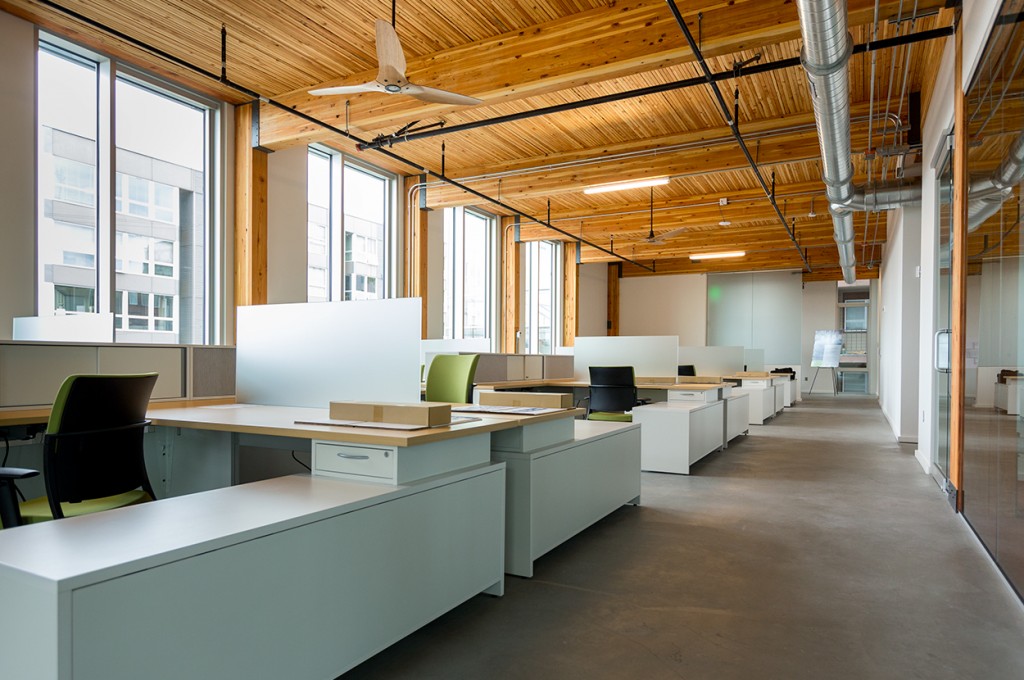Two reports released from UC Berkeley’s Center for the Built Environment provide valuable insights into the effectiveness of radiant cooling and heating systems, a promising HVAC technology that is becoming increasingly used in commercial buildings in North America, including in a high proportion of ultra-low and zero-net energy buildings. These reports reveal how such systems work in practice, analyzing comprehensive data from a large group of buildings in operation.
The findings are part of a multi-pronged research effort focused on the optimization of radiant systems for energy efficiency and comfort. This work is being conducted in collaboration with CBE’s industry partners and other collaborators, including Taylor Engineering, New Buildings Institute, TRC Energy Services and Price Industries. The overall goal of the project is to develop practical design and operation tools and guidelines for radiant systems.
Fred Bauman, project scientist at CBE and the principal investigator for the project, notes the significance of the recent findings: “This is the first time data from such a large set of radiant buildings has been aggregated and analyzed. The interviews with experienced design engineers shows that there are many approaches being used, and many diverse opinions. It confirms the benefit of our research, as we will be providing tools and guidance about the best ways to design and operate these systems.” The project has recently completed two reports that are now available online:
Energy Performance of Commercial Buildings with Radiant Heating and Cooling
The completed energy performance report provides an analysis of measured energy use, compared to standard benchmarks, for 23 buildings in North America with radiant systems for both heating and cooling, including descriptions of each building — type, size, location, climate zone, etc. The study found that nearly all the buildings outperformed peer buildings and national benchmarks, suggesting that when radiant systems are part of an integrated design approach, they can lead to low-energy consumption.

In the renovation of the Edith Green Wendell Wyatt Federal Building a VAV system was replaced with a radiant design. The design team included numerous CBE industry partners, including SERA Architects, Stantec, Interface Engineering, and Charles M. Salter Associates. Image copyright Nic Lehoux Architectural Photography.
This report came out of an effort in which we identified a large number of buildings with radiant systems, vetted these to the most representative examples, and worked with building operators and design teams to gather extensive documentation on energy performance and occupant perception of the indoor environment. CBE wishes to acknowledge the efforts of Cathy Higgins and Kevin Carbonnier of New Buildings Institute, in the completion of this work.
As part of our efforts to document these buildings, the research team also implemented the CBE occupant survey in 20 buildings, which added to six surveys already completed in radiant buildings. Analysis of the survey results for these 26 buildings is ongoing and results will be released later this year. The study will focus on answering key questions about indoor environmental quality, for example, how does satisfaction with thermal comfort and acoustic quality in radiant buildings compare against conventional all-air systems.
Read the energy performance report here.
Radiant Cooling Design and Control in North America: Results from Expert Interviews
To better understand current design practices, we interviewed eleven prominent professionals with substantial experience in the design, construction and operation of radiant buildings in North America. These professionals collectively have designed more than 330 radiant system buildings. The interviews focused specifically on design and control of high thermal mass radiant systems — referred to as thermally activated building systems (TABS). A TABS system has radiant tubing embedded in a structural slab. Also included are radiant systems with tubing embedded in topping slabs separated from structural slabs by insulation — referred to as embedded surface systems (ESS).
This study documents the variety of design and control approaches currently used, highlighting themes and variations in common practice. Our interviews revealed that there are many different approaches to designing and controlling buildings with these systems. The report also summarizes best practices as reported by these experts, noting areas where such expert insights will be of value to other practitioners. We report the interview findings objectively, based on only the interviewee responses, and include limited commentary from the research team. This project was led by Gwelen Paliaga of TRC Energy Services, who currently serves as the partner chair of CBE’s industry consortium.
Read the design practice report here.
Funding for this work is provided by the California Energy Commission (CEC) EPIC Grant Program (EPC-14-009), and by CBE’s industry partners. The full range of research activities include fundamental full-scale laboratory experiments, whole-building energy simulations, development of simplified models for radiant system controls, the validation of these new methods in field studies, collection of energy performance and occupant satisfaction survey data, and finally, updates to Title-24 California energy code.
Featured image: Interior of the Bullitt Center in Seattle shows the exposed slab, an effective practice with radiant system applications. Image copyright Big Ass Solutions.

